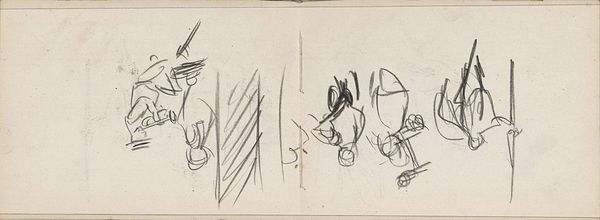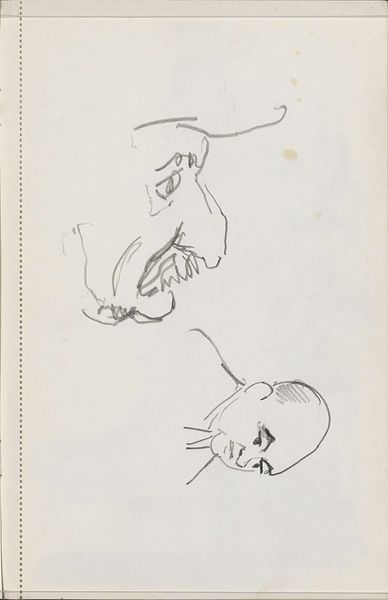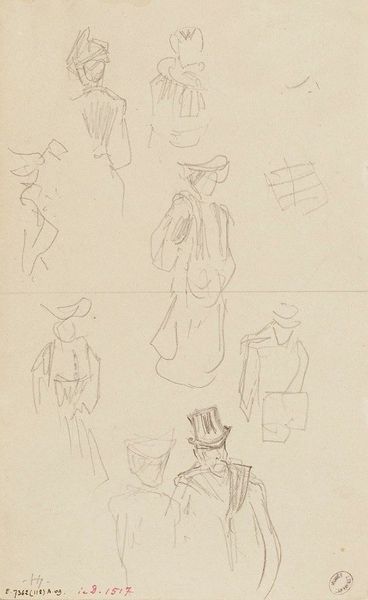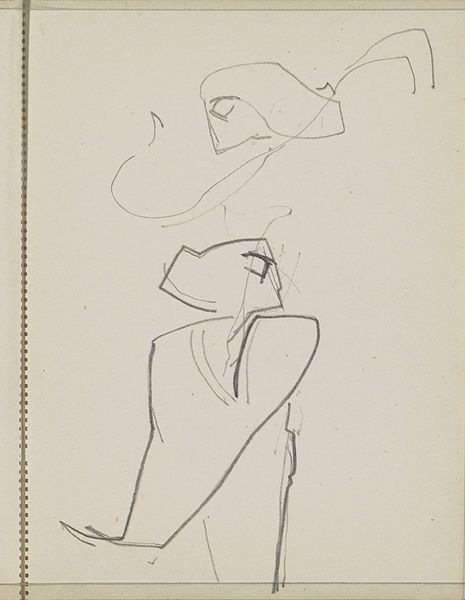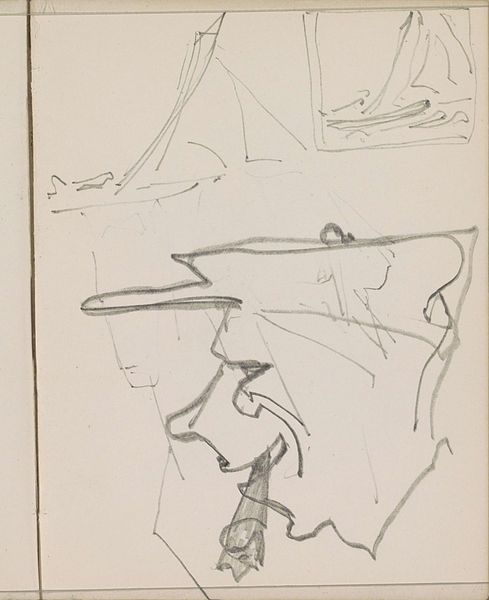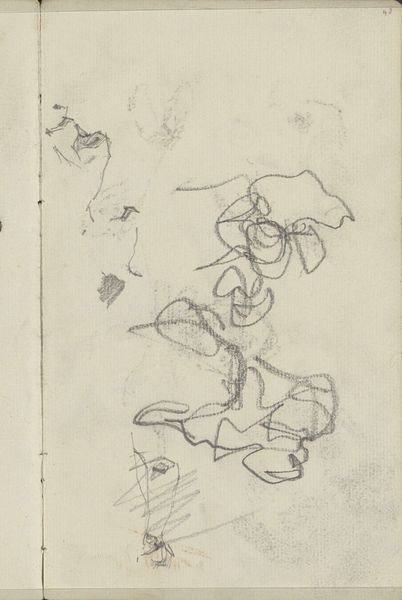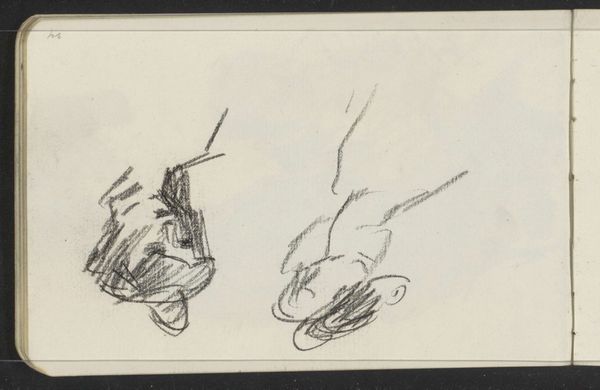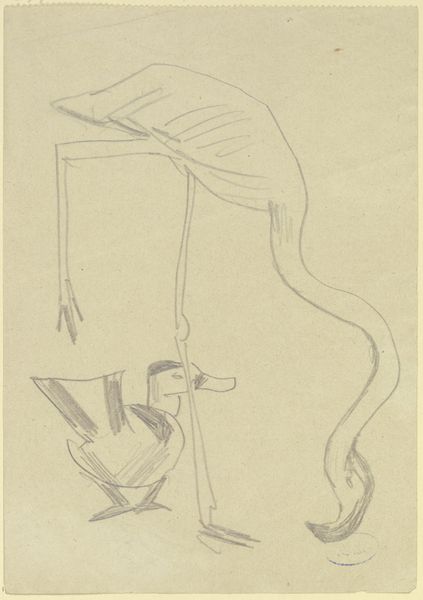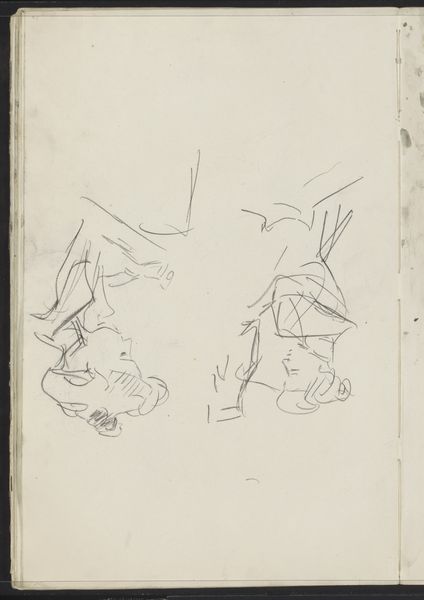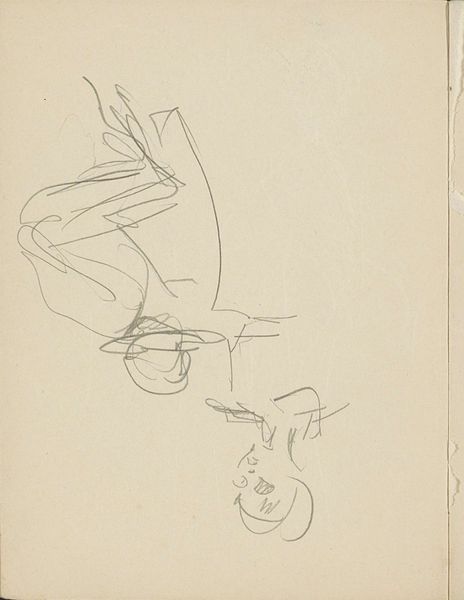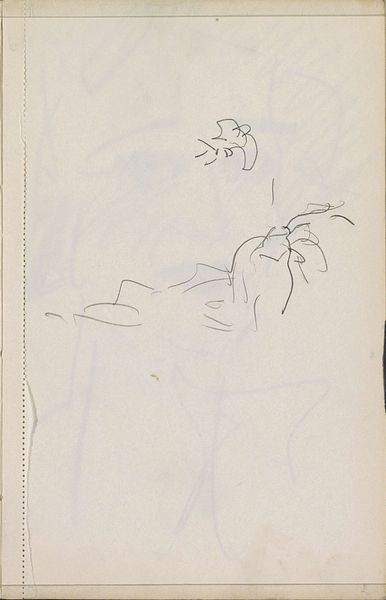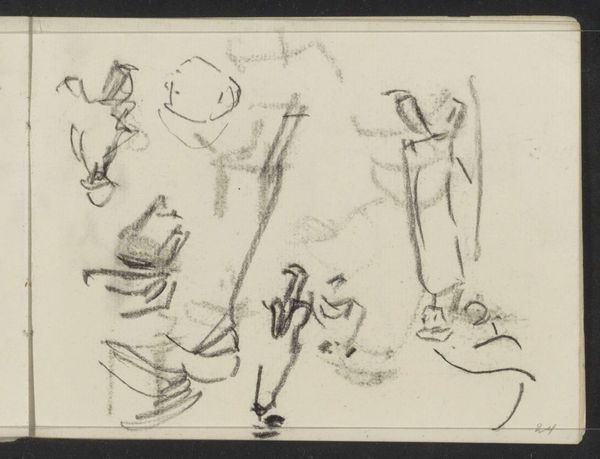
drawing, ink, pen
#
portrait
#
drawing
#
figuration
#
ink
#
pen-ink sketch
#
abstraction
#
sketchbook drawing
#
pen
#
post-impressionism
Dimensions: overall: 24.5 x 1.3 cm (9 5/8 x 1/2 in.)
Copyright: National Gallery of Art: CC0 1.0
Curator: Before us is Albert Marquet's pen and ink drawing, "Two Women," likely sketched between 1900 and 1903. Editor: It strikes me immediately as unfinished, almost ghostlike in its stark simplicity. The minimal lines barely define form, but there's an undeniable energy here, a snapshot quality. Curator: The beauty, of course, lies in its distillation. Look how few lines Marquet uses to suggest volume, especially in the lower figure's face, the shadow under her hat is rendered with such suggestive ease! Editor: And consider what is *not* there. We read "women" into these figures, but they're so devoid of detail they could be any woman. Any time. The sketch underscores how the male gaze, historically, flattens and abstracts female identity. We are seeing archetypes, perhaps, not individuals. Curator: A provocative reading. Yet the line work itself transcends mere representation, doesn't it? Notice the economy of means – a kind of visual shorthand honed over years of disciplined practice. He conveys the essential character of his subjects without resorting to facile realism. Editor: I agree, Marquet has undeniable skill. But what was the social context surrounding these "sketches"? Turn-of-the-century Paris was no equitable place for women! Without situating such representations in history, we risk normalizing a legacy of inequality. This risks becoming purely an aesthetic appreciation of masterful objectification. Curator: But must we always read through a lens of presumed exploitation? Isn't there room to appreciate the formal qualities – the confident line, the spatial arrangement, the tonal contrasts – independent of sociopolitical considerations? The upward visual momentum towards the hat on top generates so much dynamism from so little ink! Editor: It’s about making space to look critically. Looking carefully doesn't preclude attention to larger questions of who is seen, who isn’t, and why they appear as they do in cultural products such as drawings. Ignoring this seems willfully naive. Curator: Perhaps. Although sometimes I believe over contextualization steals some of the intrinsic beauty away from art. Editor: Maybe there is beauty in that disruption, challenging old views, sparking change for something new.
Comments
No comments
Be the first to comment and join the conversation on the ultimate creative platform.
